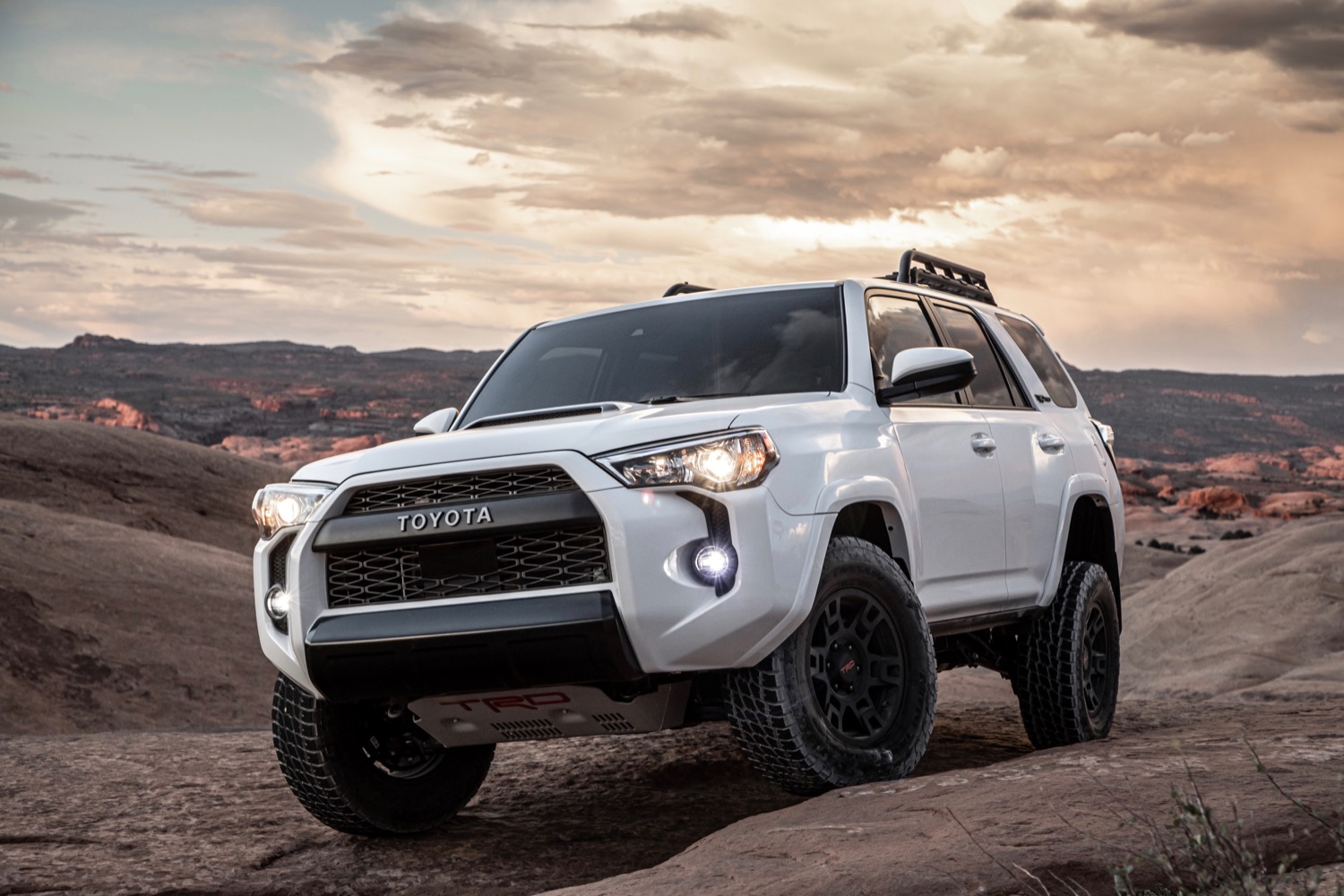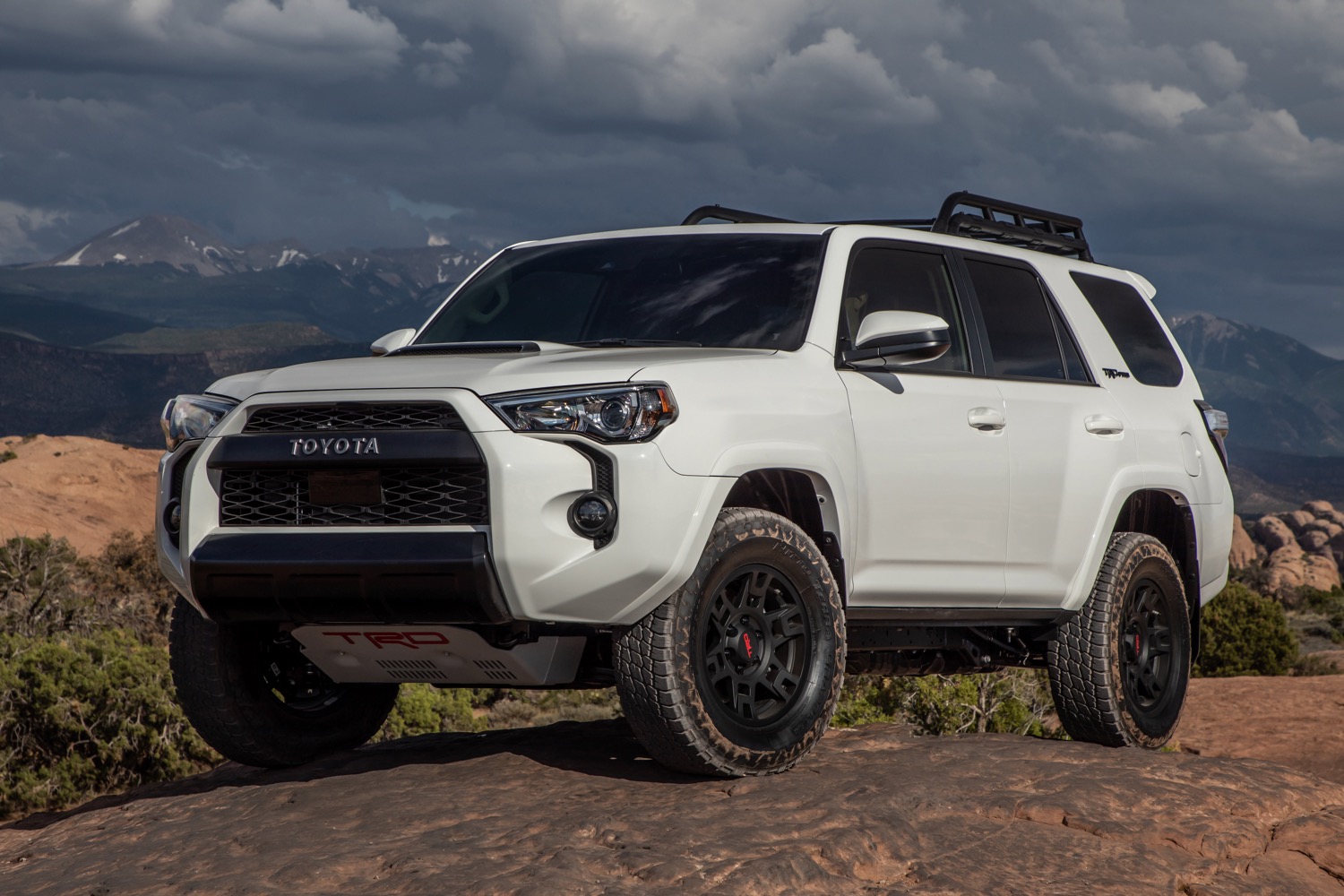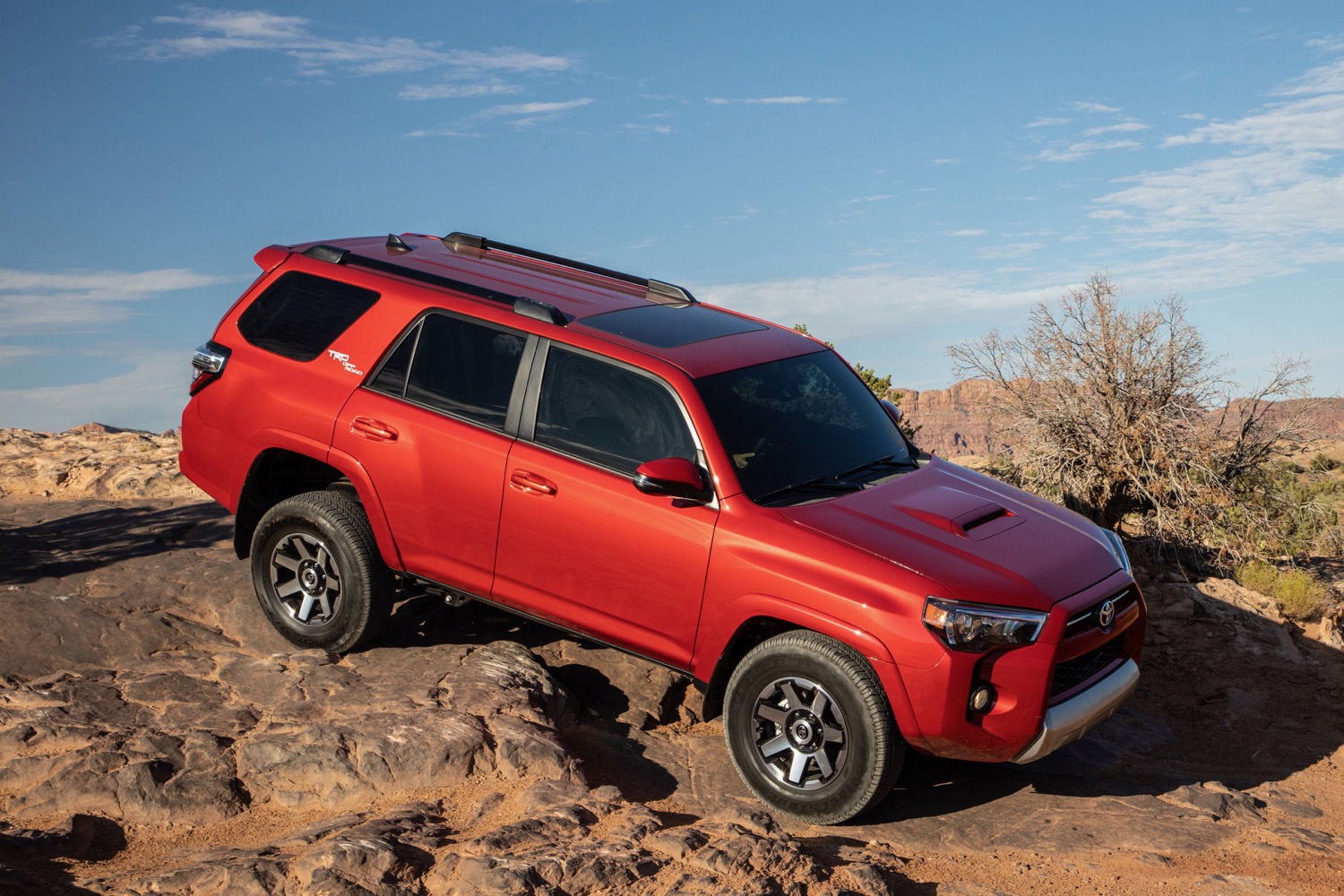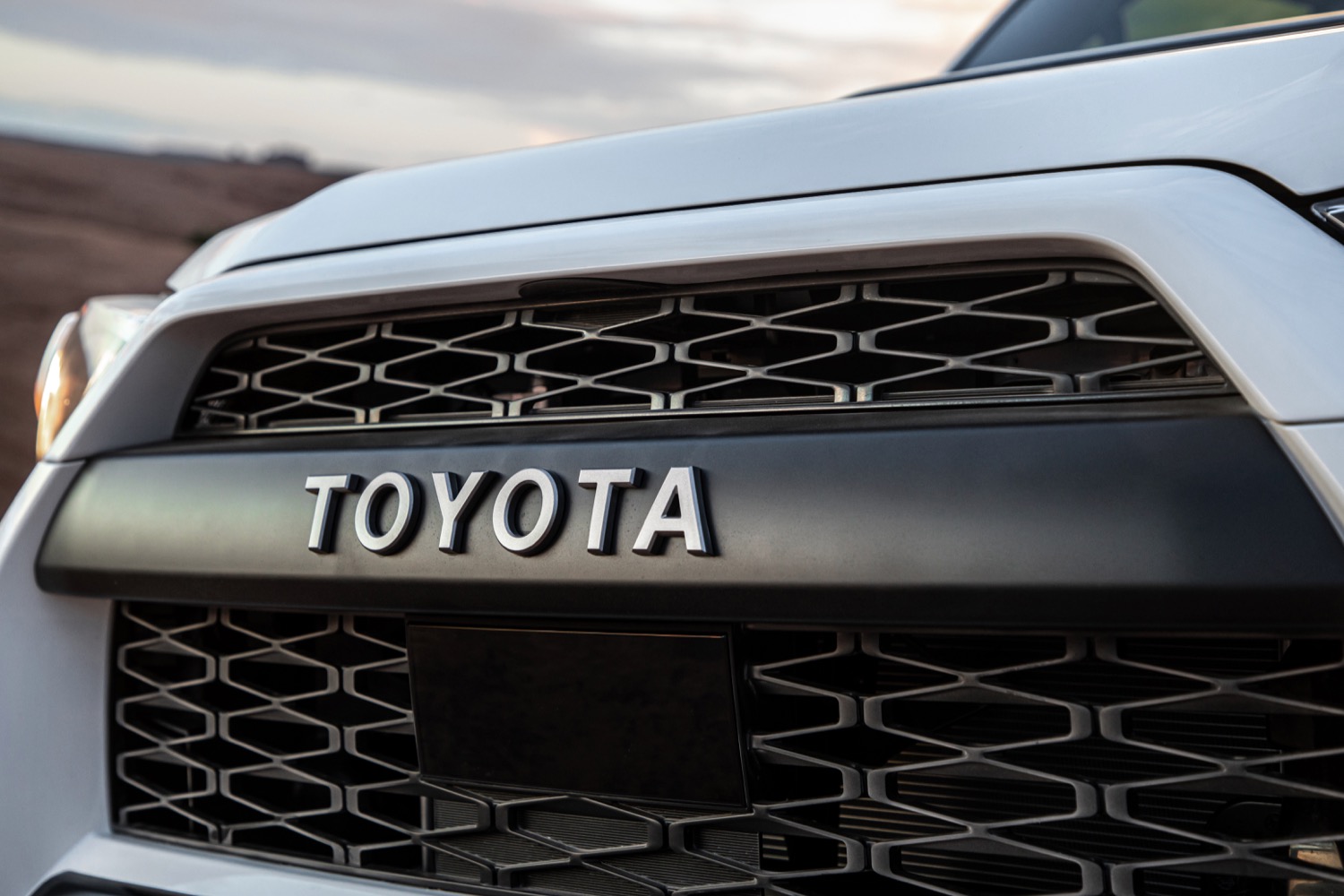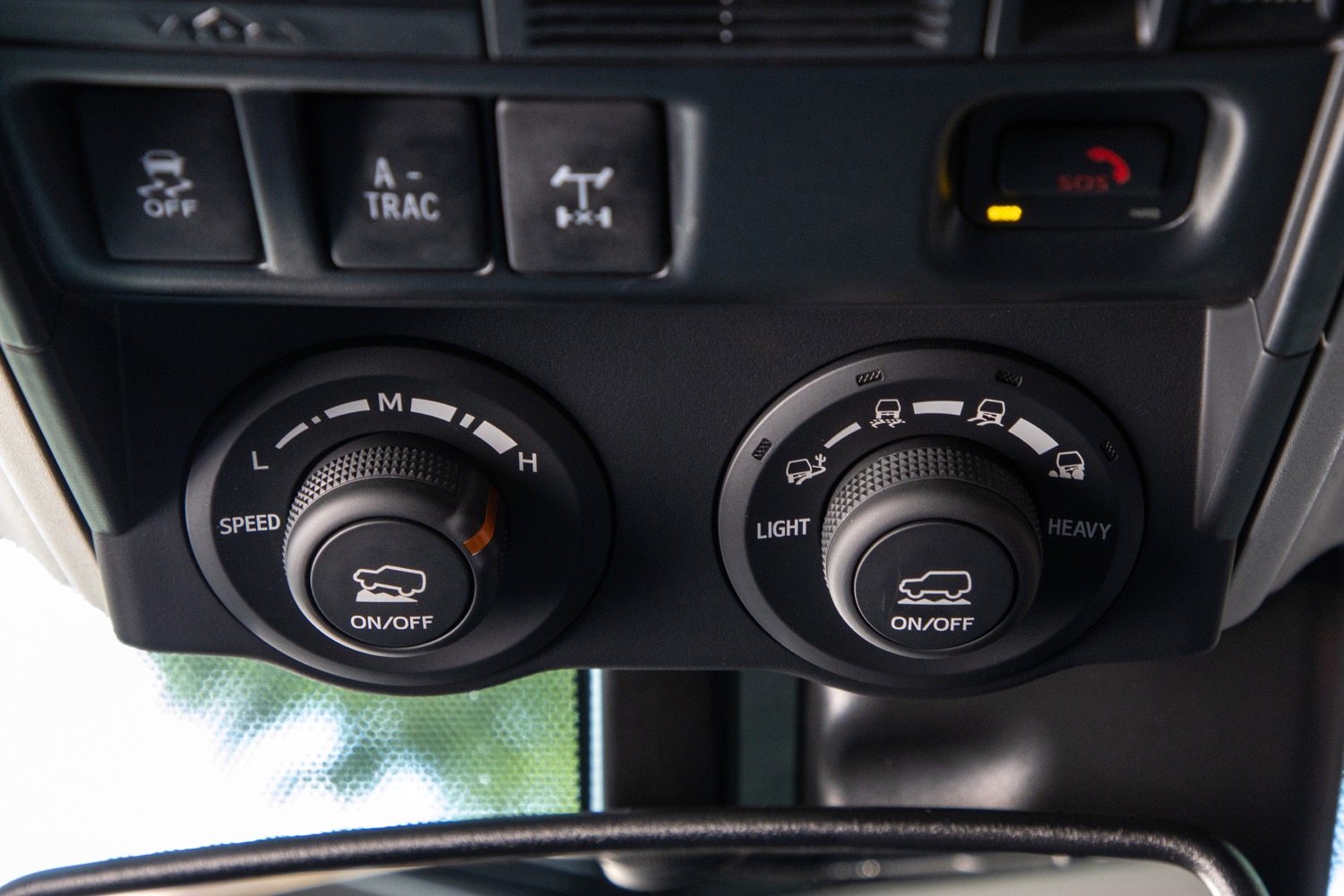The Toyota 4Runner is one of the original SUVs, and one of the few that retains true off-road capability. In an age of car-based crossovers, the truck-like 4Runner is something of an anachronism. But for buyers who want an SUV that can keep going where the pavement ends, it’s hard to beat the 4Runner. For the 2020 model year, the 4Runner mixes its old school off-road capability with new safety and tech features.
The 2020 Toyota 4Runner doesn’t change much on the outside, but on the inside, it gets a new instrument panel designed to accommodate an 8.0-inch touchscreen. The 4Runner is one of the first Toyota models to get both Apple CarPlay and Android Auto, and it’s compatible with Amazon Alexa as well. That means drivers now have the choice of asking Siri, Google, or Alexa for directions to the best campsite, Toyota noted. For 2020, the 4Runner also gets two more USB ports for rear-seat passengers.
The 4Runner also gets the Toyota Safety Sense P (TSS-P) bundle of driver aids as standard equipment for 2020. TSS-P includes autonomous emergency braking, lane departure warning, automatic high beams, and adaptive cruise control.
Toyota didn’t make any major mechanical changes for 2020, so the sole engine option on the 4Runner is still a 4.0-liter V6. The naturally aspirated engine makes 270 horsepower and 278 pound-feet of torque, and is mated to a five-speed automatic transmission. Rear-wheel drive is standard, and Toyota offers two optional four-wheel drive systems. Most trim levels get a part-time system optimized for off-roading, while the Limited trim level gets a full-time system that’s better suited to on-road driving. Both four-wheel drive systems have a two-speed transfer case with low range, ensuring maximum traction on the trail.
In addition to the mechanical advantage of low range, the 4Runner uses some tech tricks to make off-roading easier. Hill-start assist is standard on all trim levels, while downhill assist is standard on the Limited and SR5 models. The latter automatically holds the 4Runner at low speeds while descending hills. The TRD Off-Road and TRD Pro models get Toyota’s Crawl Control, which basically acts as low-speed cruise control in off-road conditions, and Multi-Terrain Select, which adjusts vehicle settings for different surfaces. An optional extra on the TRD Off-Road model, Kinetic Dynamic Suspension allows more wheel travel at low speeds to make it easier to get over obstacles, but stiffens up at higher speeds to improve on-road handling.
The TRD Pro is the most rugged 4Runner model, so it gets a few extras like 2.5-inch Fox internal-bypass shock absorbers, Nitto Terra Grappler tires, and a front skid plate. A cat back exhaust system is new for 2020. Toyota didn’t mention any performance improvement, but the new exhaust should at least make the 4Runner’s V6 sound nicer.
Pricing for the 2020 Toyota 4Runner starts at $37,140 for a base SR5 model with rear-wheel drive. A range-topping, four-wheel drive, TRD Pro model will set you back $50,885 (all prices include a mandatory $1,120 destination charge). That may seem expensive, but it’s possible to spend similar money on a Jeep Wrangler Unlimited once the options pile on.
Editors' Recommendations
- Off-roading in a plug-in Jeep is like hiking with A/C
- The best off-road vehicles
- Fresh off a redesign, the 2020 Subaru Forester adds more safety tech
- Six advanced tech features that make off-road driving easy
